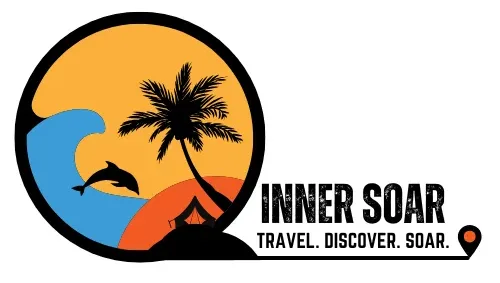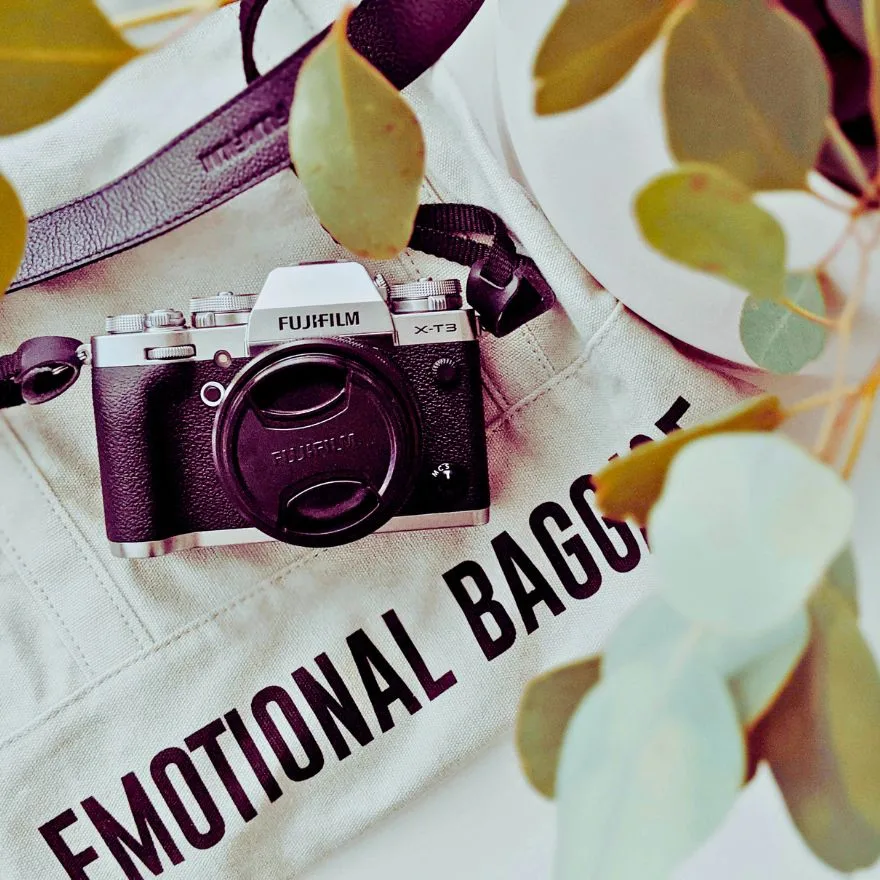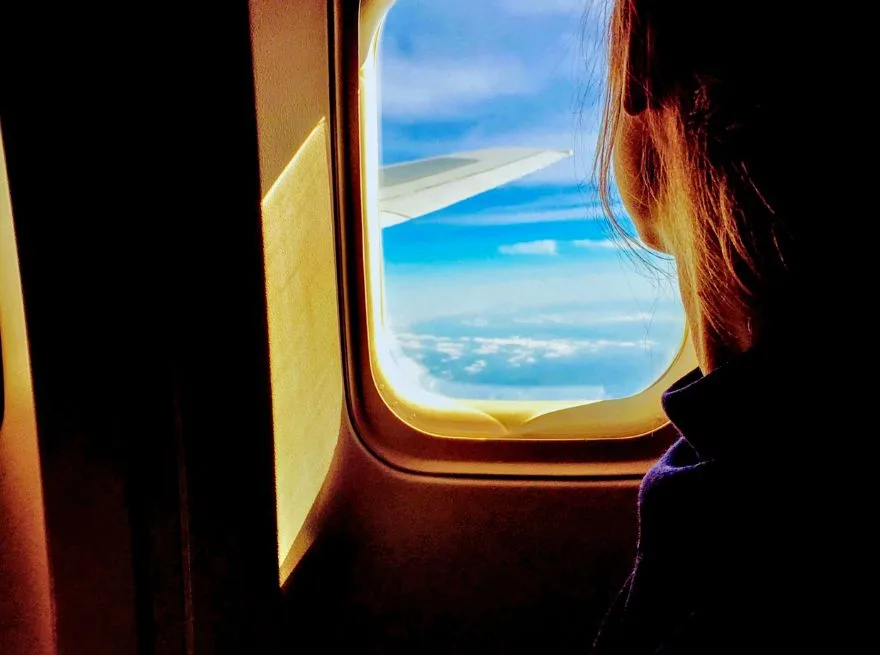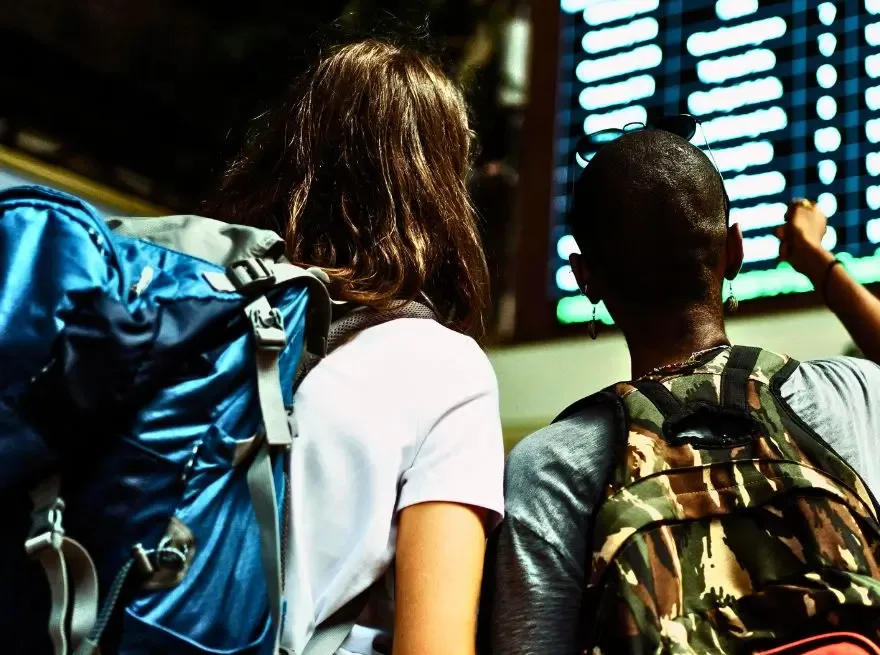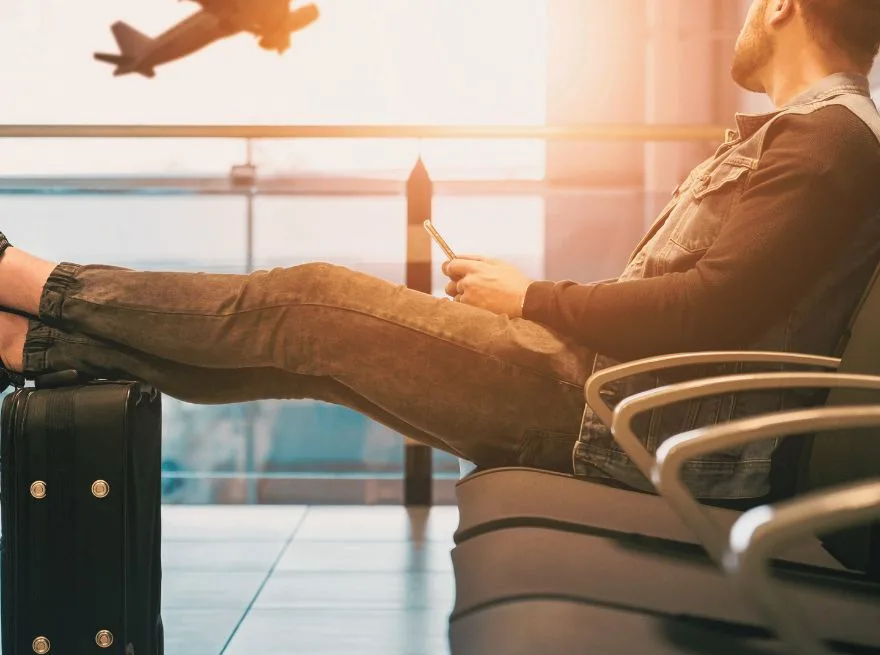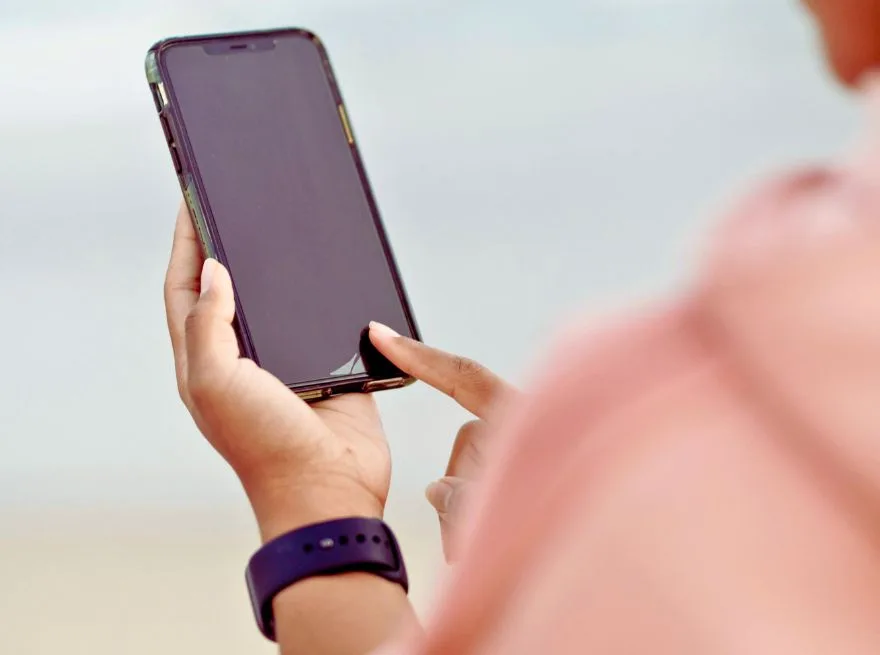There’s a peculiar weight to an overstuffed suitcase. Not just the physical heft that strains your shoulders and makes you navigate airport corridors like a pack mule, but something deeper—a metaphorical burden that follows you through cobblestone streets and mountain passes, whispering that you’re carrying more than clothes and toiletries. You’re carrying fear. The fear of not having enough, of being unprepared, of facing the unknown without your familiar armor of possessions.
I learned this lesson not in a moment of enlightenment, but through exhaustion. Picture me: dragging a massive wheeled suitcase up three flights of narrow stairs in a centuries-old building in Lisbon, my backpack threatening to pull me backward with each step, a tote bag cutting circulation from my shoulder. Somewhere between the second and third floor, gasping for breath and questioning every life choice that led to this moment, I made myself a promise. Never again.
That was five years ago. Today, I travel with a single carry-on backpack, no matter where I’m going or for how long. And in learning to pack less, I discovered something profound: the lightness in my bag created lightness in my being. The space I freed in my luggage opened space in my mind, in my schedule, in my ability to simply be present with wherever the journey took me.
The Philosophy of Enough
Before we dive into the practical magic of minimalist packing, we need to address the philosophy that makes it possible. Because traveling light isn’t really about packing techniques or choosing the right gear—though those things help. It’s about fundamentally shifting your relationship with the concept of “enough.”
We live in a culture of abundance, where more is always positioned as better. More options, more backup plans, more stuff to make us feel secure. But when you’re standing in front of an open suitcase, trying to condense your life into a portable container, you’re forced to confront a beautiful, terrifying question: What do I actually need?
Not what might I need if it rains and then gets hot and then I’m invited to a fancy dinner and then I decide to go hiking. What do I need, right now, for the journey I’m actually taking?
This question extends far beyond travel. It seeps into how we approach life itself. How much do we accumulate—experiences, commitments, possessions, worries—because we think we should, because we fear scarcity, because we’ve never stopped to ask if we truly need it?
The ancient Stoics understood this. Marcus Aurelius wrote, “Very little is needed to make a happy life; it is all within yourself, in your way of thinking.” When you travel light, you practice this philosophy in the most tangible way possible. You strip away the excess and discover that you are, miraculously, still whole.
The Liberation of Limits
There’s a counterintuitive truth about constraints: they set you free. Give someone unlimited options, and they freeze, paralyzed by choice. Give them three carefully chosen options, and they move forward with clarity and confidence.
Packing light is an exercise in creative constraint. When you limit yourself to what fits in a carry-on bag, you can’t bring seven pairs of shoes “just in case.” You can’t pack that bulky camera equipment that you’ve convinced yourself you’ll use. You can’t carry three books because you’re not sure what mood you’ll be in.
Instead, you choose. You prioritize. You become intimate with what matters most to you.
I remember walking through the night markets of Chiang Mai with nothing but a small daypack. A vendor displayed the most exquisite hand-woven scarf I’d ever seen—deep indigos and saffron yellows that seemed to hold the Thai sunset within their threads. The old me would have immediately thought, “But where will I put it? My bag is already full.”
The new me, traveling with space to spare, bought that scarf. I wore it that evening, feeling it drape across my shoulders like a blessing. I wore it throughout the rest of my journey, and I wear it still, years later, each time remembering that market, that moment, that feeling of having room for beauty I hadn’t anticipated.
This is what traveling light offers: space for the spontaneous, the unexpected, the unplanned gifts that travel wants to give you. When your bag is already bursting at the seams, there’s no room for serendipity. When it’s light, there’s space for magic.
The Practical Poetry of Packing
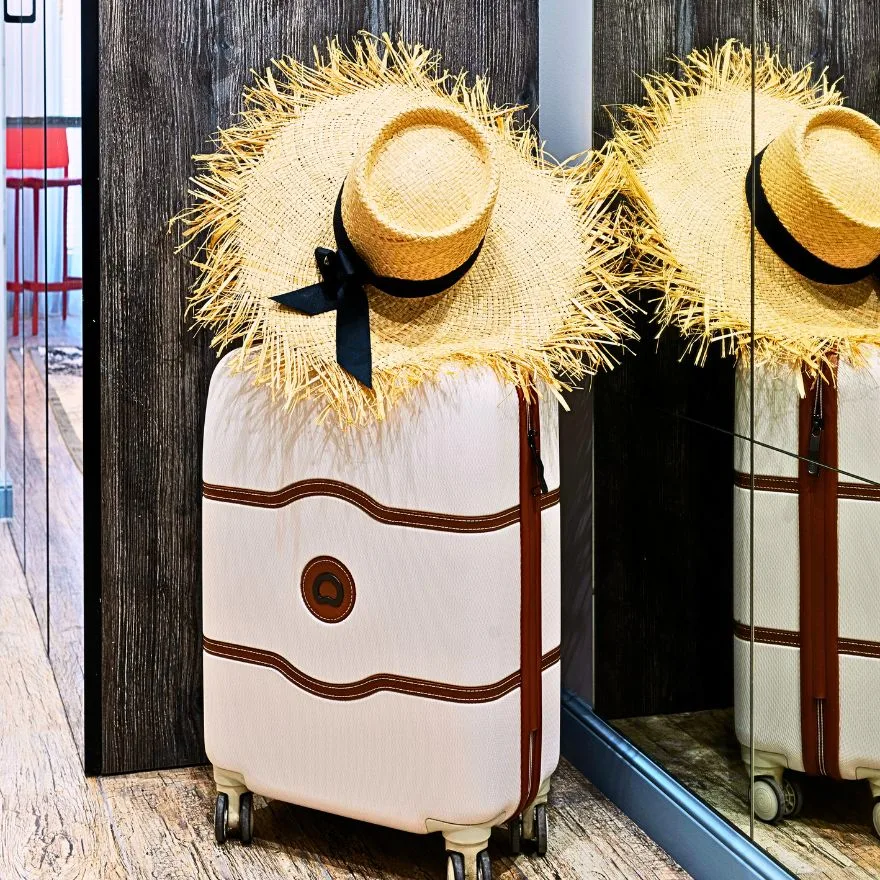
Let me share the practical aspects of this philosophy, because ideas without application remain beautiful but useless dreams.
The capsule wardrobe approach is your foundation. Choose a color palette—for me, it’s blacks, grays, and one accent color—and build everything around it. Six tops, three bottoms, one dress or collared shirt, one light jacket. Everything mixes, everything matches, everything serves multiple purposes.
That black t-shirt? Worn alone for casual days, layered under the jacket for cooler evenings, tucked into the dress pants for something more polished. The linen shirt? Beach cover-up, dinner attire, tied at the waist over the dress for a completely different look. You’re not packing outfits; you’re packing a system.
Fabrics matter more than you think. Merino wool is your ally—it breathes, it doesn’t hold odors, it regulates temperature, it dries quickly. That single merino wool dress I carry has taken me from sticky Bangkok afternoons to chilly Seoul evenings without complaint. Synthetic blends designed for travel are equally magical, washing clean in a hostel sink and drying overnight.
The 3-1-1 rule for toiletries isn’t your enemy; it’s your teacher. Decant your products into small containers. Better yet, switch to solid versions—shampoo bars, solid sunscreen, moisturizer bars. You’ll be amazed by how little you actually need when you’re forced to prioritize. Do you need five different hair products, or can one multi-purpose oil do the job?
Technology consolidation is crucial. One device that does many things beats many devices that do one thing each. Your smartphone is your camera, your guidebook, your translator, your journal, your entertainment center. Yes, I know—the quality might not match a professional camera, but ask yourself: are you a photographer on assignment, or a traveler wanting to capture memories? For most of us, the answer guides the choice.
And here’s a secret that changed everything for me: the stuff sack system. Compression cubes or dry bags keep everything organized and compressed. One for clothes, one for toiletries, one for electronics, one for miscellaneous. When you can see everything at a glance and nothing is a tangled mess at the bottom of your bag, packing and unpacking becomes a meditation rather than a chore.
The Weight We Carry
But let’s go deeper, beyond the physical. Because when I talk about traveling light, I’m not just talking about what’s in your bag. I’m talking about what’s in your heart.
Every time I’ve traveled heavy, it wasn’t really about the weight of my possessions. It was about the weight of my fears. The backup outfits were fear of judgment. The excessive first-aid supplies were fear of vulnerability. The multiple guidebooks and printed maps were fear of being lost, of not being in control.
When you pack light, you practice trust. Trust that you’re resourceful enough to figure things out. Trust that if you forget something or don’t have the perfect outfit for an occasion, it won’t be catastrophic. Trust that the journey itself will provide what you need, often in ways you couldn’t have anticipated.
I think about the time I arrived in Kyoto to discover I’d forgotten my adapter for Japanese outlets. My phone was dying, and with it, my maps, my translation app, my reservation confirmations. The old me would have panicked. The me who had learned to travel light simply asked at the hostel if they had one I could borrow. They didn’t, but a fellow traveler overheard and offered to let me charge my phone in their room. We ended up exploring Fushimi Inari together the next day, creating a friendship that outlasted the trip.
The problem I feared became the seed of connection. But only because I didn’t have the weight of self-sufficiency creating a barrier between me and needing others.
The Rhythm of Movement
There’s a rhythm to traveling light that changes how you move through the world. With a heavy bag, you lumber. You calculate. You seek shortcuts and avoid stairs. You arrive at your destination already depleted, needing to recover before you can begin exploring.
With a light bag, you flow. You take the scenic route. You say yes to unexpected detours. You have energy left for wonder.
I remember walking through the narrow streets of Barcelona’s Gothic Quarter, my backpack feeling like an extension of my body rather than a burden strapped to it. When I stumbled upon a tiny doorway leading to a medieval courtyard, I didn’t hesitate. I ducked through, climbed the ancient stairs, and found myself in a hidden garden where local artists gathered for an impromptu exhibition.
Would I have explored that doorway with a massive suitcase? Would I have had the energy and curiosity left after hauling excess baggage through the city? I doubt it.
Traveling light makes you nimble, not just physically but mentally. You become comfortable with fluidity, with changing plans, with following your intuition down unmarked paths. You’re not weighed down by the logistics of managing your possessions, so you can attend to the more important logistics of following your soul.
The Space Between
In Japanese aesthetics, there’s a concept called “ma”—the space between things, the pause that gives meaning to sound, the emptiness that defines fullness. Traveling light is an exercise in ma.
When your schedule isn’t crammed, when your bag has empty space, when you don’t fill every moment with planned activities and every pocket with just-in-case items, you create room for ma. And in that space, the real travel happens.
The conversations with strangers that stretch into evening. The hours spent sitting in a café, watching the light change, writing in your journal. The decision to skip the famous museum because the park outside looks too inviting to resist. These aren’t the moments you can plan; they’re the moments that find you when you have space for them.
I spent an entire afternoon in a small Croatian town doing nothing but sitting on the harbor wall, watching fishermen mend their nets. I hadn’t planned it. I had planned to visit three more towns that day. But my bag was light, my schedule was flexible, and something about the afternoon light on the water said, “Stay.”
That afternoon, that simple act of watching and being, taught me more about the rhythm of life in that place than any guided tour could have. But I needed the space—physical and temporal—to receive that teaching.
The Return Home
Here’s what nobody tells you about learning to travel light: it changes how you live when you’re not traveling. Once you’ve proven to yourself that you can be happy, functional, and fully yourself with just what fits in a carry-on bag, it’s hard to return to a life of accumulation without questioning it.
My closet at home is smaller now. My kitchen is more streamlined. When I’m tempted to buy something, I ask myself the traveler’s question: “Would I pack this?” Often, the answer is no, and I walk away, pockets and conscience lighter.
This isn’t about becoming an extreme minimalist or rejecting all possessions. It’s about applying the same intentionality you learned on the road to your everyday life. It’s about choosing what you keep based on whether it serves you, brings you joy, or holds genuine meaning—not based on fear, obligation, or the vague sense that you should have it.
My home now feels more like those carefully packed bags: everything has its place, everything serves a purpose, and there’s space—literal and figurative—for what matters.
The Practice of Letting Go
Traveling light is ultimately a practice of letting go. Letting go of the belief that you need more to be safe. Letting go of the illusion that you can control every variable. Letting go of the weight of other people’s expectations about how you should travel, what you should see, who you should be.
Every time you choose to leave something behind, you practice a small death—the death of the version of you that needed that thing. And in that space, a lighter, freer version can emerge.
I started this practice with my luggage, but it spread to everything. I let go of jobs that weighed heavy on my spirit. I let go of relationships that had become burdens rather than bonds. I let go of the need to document every moment, to prove to others that my adventures were worthy.
With each letting go, I became lighter. Not because I had less, but because what I carried was chosen rather than accumulated, intentional rather than default.
An Invitation
So here’s my invitation to you: Next time you travel, try packing half of what you think you need. Not because I say so, but as an experiment in self-discovery. Notice what you miss—there will be something—but more importantly, notice what you don’t miss at all. Notice how it feels to move through airports and train stations and city streets with ease. Notice the mental space that opens up when you’re not managing, organizing, and worrying about all your stuff.
Then notice what fills that space. Is it anxiety, or is it presence? Is it lack, or is it freedom?
For most of us, traveling is a temporary departure from normal life—a vacation, an escape, a special event. But what if we learned to travel through our regular lives with the same lightness we’re cultivating in our suitcases? What if we moved through each day carrying only what we truly need, leaving space for unexpected beauty, for spontaneous connections, for the magic that only visits when we’re not already full?
The art of traveling light isn’t really about packing at all. It’s about remembering that you are enough, just as you are, with just what you have in this moment. The journey is teaching you this—if you’re willing to lighten your load enough to learn.
The Journey Continues
I still struggle sometimes. There are trips where I overpack, where I convince myself that this time is different, that this destination requires more. But each time I find myself struggling with a heavy bag, I’m reminded of the truth I learned in Lisbon, climbing those stairs: the weight we carry is a choice.
And with each journey, I choose more consciously. I choose lightness—not just in my bag, but in my being. I choose trust over fear, presence over preparation, experience over insurance against discomfort.
The road unfolds before us, full of unknowns and possibilities. We can approach it laden with defenses and contingencies, or we can approach it light, agile, open to whatever comes. The journey is the same; we are different.
Pack light. Travel far. And in the space you create, may you find not emptiness, but the fullness of being truly, radiantly present with the world and with yourself.
The path is calling. How light will you travel?
